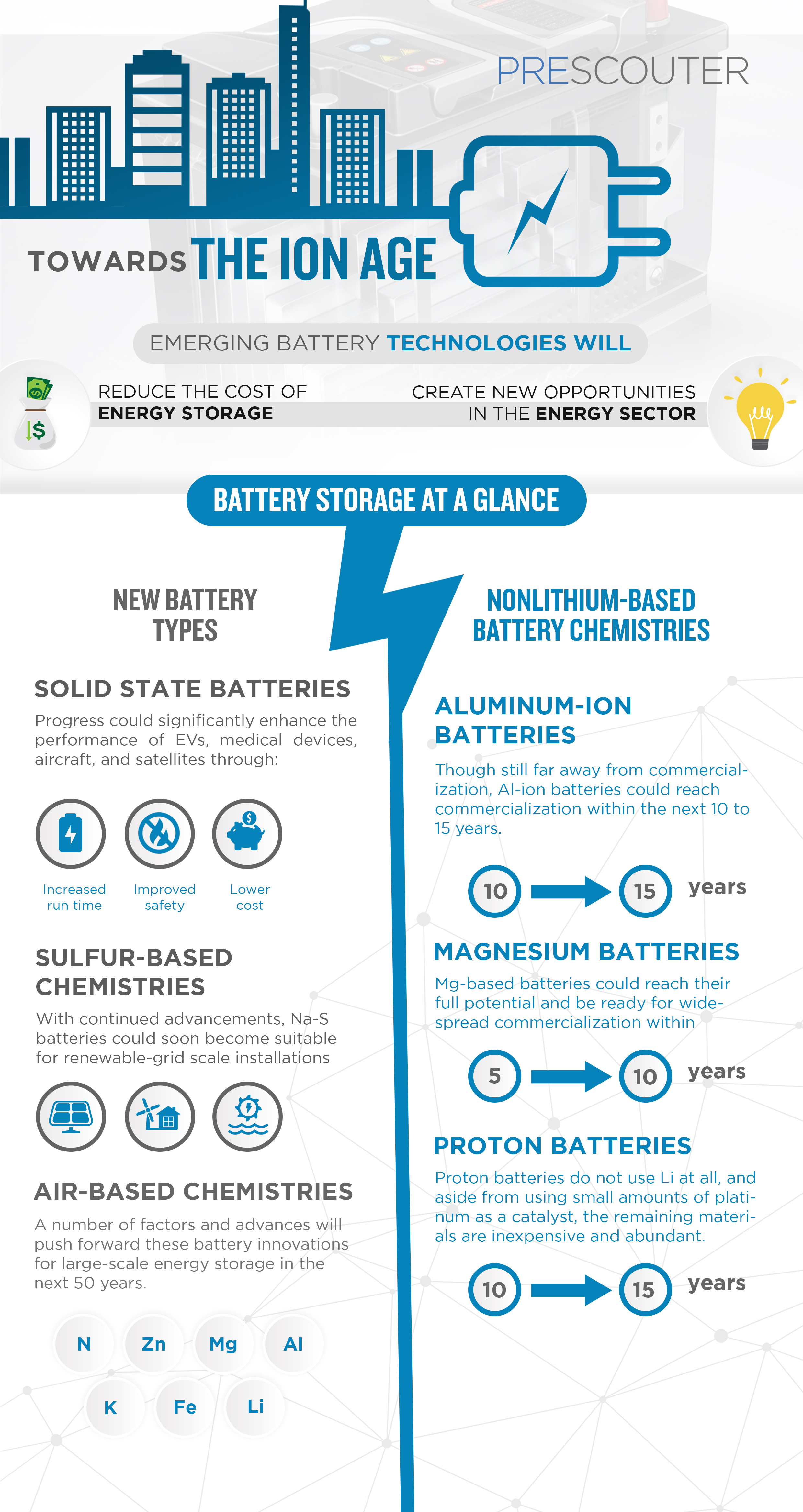The race to build the next innovative battery is heating up. Sofiane Boukhalfa and Navneeta Kaul at PreScouter look at the disruptive battery technologies that could revolutionize energy storage in the next five decades.
Energy storage technology and its continuing evolution will enable significant improvements in many critical areas of life. Better energy storage solutions will aid our shift to renewable energy and help combat climate change, allow for further miniaturization of electronic devices and the proliferation of the Internet of Things and edge sensor networks, and power wearable clothing and augmented technology that follows us everywhere we go. Batteries are a critical component of the world of energy storage solutions and a wide range of devices from mobile electronics to electric vehicles (EVs).
The search for a better battery
The importance of batteries is highlighted by the intense research and development currently ongoing across the world to develop new or improved battery chemistries, components and technologies. During the next 50 years, it will be the applications and products that will drive battery adoption and determine which battery technologies and chemistries will win in the marketplace. Such applications have specific requirements, such as energy density (how much energy can be stored), power density (how quickly it can be accessed), lifetime (performance across the lifetime of the battery), cost and many others.
For some applications – especially those targeted for individual consumers such as mobile devices and EVs – cost is one of the key factors that will decide which battery chemistries will end up in which devices and how the overall market will evolve. Concerns over toxicity and other dangers are also influencing which of these technologies are being selected. Finally, new chemistries are being unlocked thanks to nanotechnology and artificial intelligence.
In the near future, we expect to see high-performance batteries with optimized chemistries for specific applications ranging from EVs to grid storage. With new approaches such as nanotechnology and carbon coating, future battery techs will see improvements to lithium-ion (Li-ion) batteries by incorporating and optimizing the content and nanoarchitecture of other materials like silicon, which can help increase energy density and maintain battery performance.
Tomorrow’s technology
Emerging battery technologies that could play a pivotal role in reducing the cost of energy storage and creating new opportunities in the energy sector are included in the infographic below. More details for each section can be found in our write up for the Energy Industries Council – Energy Focus magazine.









